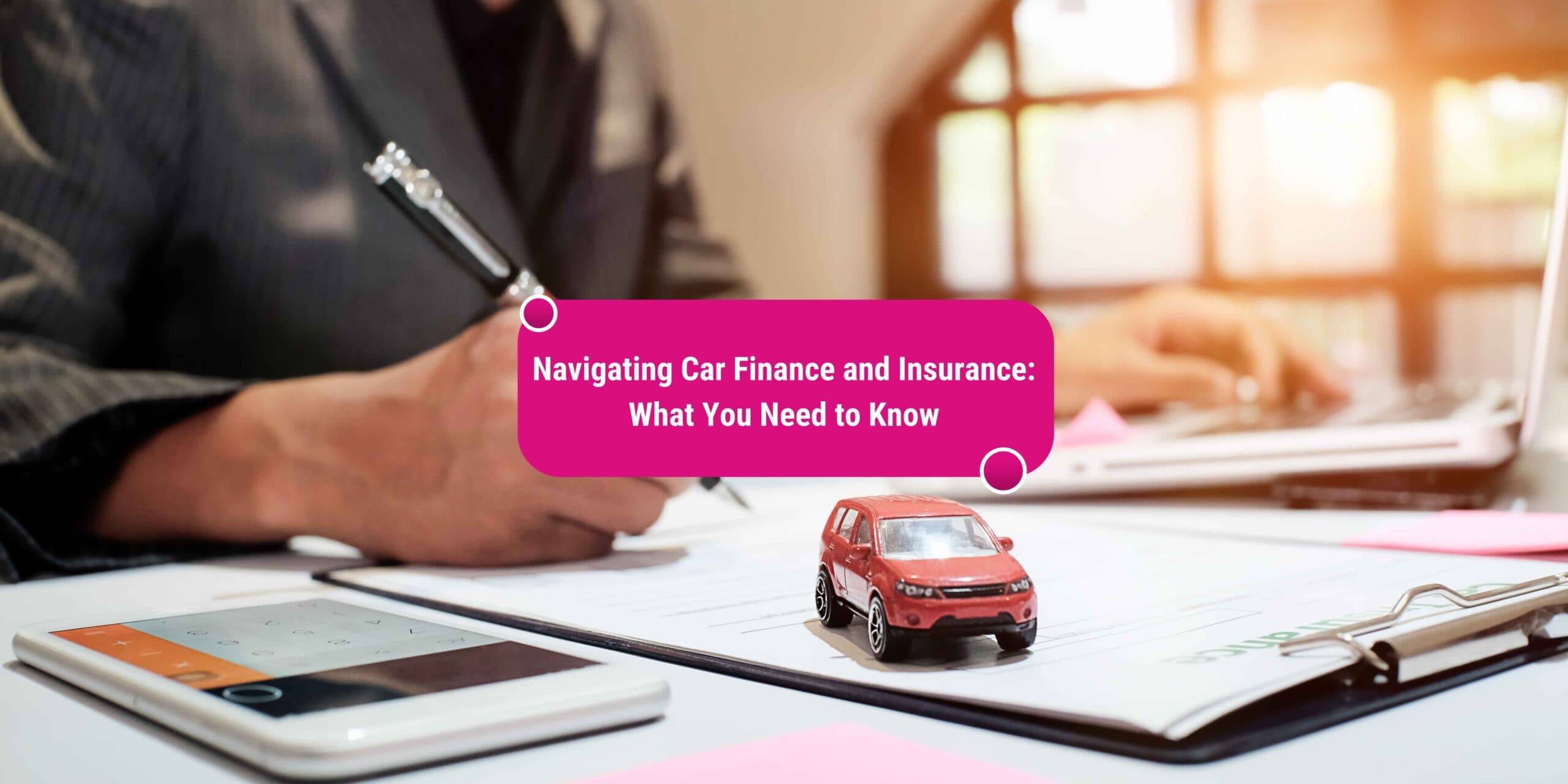Car Finance and Insurance
Car finance is one of the most significant financial commitments consumers make. Over 48 million people in the UK travel daily by car, accounting for approximately 69% of the total distance covered. Besides the finance agreement to fund the vehicle purchase, there is also the issue of car insurance. Depending on one’s insurance policy, insurance payments can financially overwhelm individuals. As such, it is important to be informed of the options available for financing a vehicle as well as the type and standard of insurance that best suits one’s needs. This essay thus seeks to explore these aspects in addressing the following:
• The relevance of the choice of finance means for buying a new or used car and their long-run variation in financial consequences. All parties are also invited to consider the type of car finance most relevant to them. • The relevance of the subjective elements in motor car insurance quotes, including a ‘fact sheet’ to establish the profile of the most suitable insurer and the range of quotes they can expect. Readers are invited to complete the ‘Did you know’ exercise and reflect on the reasons why the answers are the way they are. The choice of car, the payment method, and the insurance policy may have a critical bearing on their ability to eventually achieve their objective.
The costs of car maintenance, replacement of tires, car tax, depreciation, and normal wear and tear need to be taken into account, together with the cost of Vehicle Excise Duty. Motor insurance costs and non-insured damage costs may also be expected. Individuals are invited to consider the type of insurance policy that best suits their lifestyle and tailor the policy to their own needs. All factors can serve as the educational springboard.
Understanding Car Loans
Car Loans in Vehicle Purchase Financing
In simplest terms, car loans are formal agreements to borrow a specified amount of money from a creditor for the purpose of purchasing a vehicle. Car loans are an attractive option for those who do not have the immediate financial means to pay for an entire vehicle upfront but can afford to gradually repay the financial assistance they receive. It therefore functions as a financing instrument. Because car loans cater to financing, it is necessary to grasp the intricacies of car loans to be able to make an informed decision when it comes time to finance a vehicle purchase. This includes understanding the loan application and approval processes, eligibility requirements, and debt agreement terms.
Loan Application – Loan Application – In the Philippines, loan applications are typically coursed through the car dealers. The buyer fills out a preliminary loan application form and awaits the loan terms that the dealership and its partner lenders may provide. Application forms may also be available at the bank’s facilities. – Personal, Employment & Income Information – Applicants need to disclose pertinent personal information, such as name, address, age, etc., and employment background, such as the name and address of the employer, job title, monthly income, and length of employment. Military personnel can also expect to be asked about their rank and enlistment duration. – Credit Information – To assess the creditworthiness of borrowers, lending institutions require credit reports from registered credit bureaus. These reports include credit history evaluations, including but not limited to how payments are managed.
Types of Car Loans

There are a couple of types of borrowing options when it comes to car financing. If a car loan is needed, there are many lenders from which to receive financing. An unsecured car loan is borrowed from a lender with no need for collateral to guarantee the loan. This means that the lender cannot repossess the car in the case of nonpayment. Since this type of loan is riskier for lenders, the interest rate and annual percentage rate are generally higher in comparison to a secured loan. If the borrower falls behind in payments, there is no property for the lender to take should the borrower default on the loan. A secured car loan is a type of loan obtained from a financial institution, not a car dealer. The buyer could use the loan to buy a car from someone selling a car or from a dealership. One advantage of a secured car loan is that typically the interest rates are lower because it is linked to an asset. This type of loan is structured in such a way that it is paid off with equal monthly payments for a scheduled period of time, usually for around five years. The loan is good for a depreciating asset like cars. Secured loans are designed for borrowers with little or no credit, those with credit challenges, or those with little savings for a down payment. Dealership financing, banks, and credit unions are known for offering secured car loans. Dealership car loans often come with higher interest rates and may require a larger down payment but offer greater flexibility. Dealerships often want car loan applicants to earn a minimum monthly income and have a relatively low debt-to-income ratio. Typically, car dealerships offer higher interest rates than banks or credit unions. It is advisable to shop around before deciding on a lender. Personal loans are another option, and they may offer lower interest rates than auto loans, depending on the interest rate, loan terms, and other factors. Banks and credit unions are known to offer personal car loans.
Interest Rates and Terms
Another bottom-line consideration is the total cost of borrowing. In general, low interest rates are good, just as long loan terms are good because they offer low monthly payments. But the lower the interest rate and the shorter the repayment period, the lower the total finance cost (and the ability to put the savings to use elsewhere). The rate of interest on a loan is the price a borrower pays for using the lender’s money. Consider three factors by which lenders set interest rates: the Federal Reserve rate, a borrower’s credit score, and economic conditions. Auto loan interest rates are usually lower than credit card interest rates, and for consumers with a good credit score, auto loan interest rates are usually lower than personal loan rates. Though low, interest rates can fluctuate, and an upturn can cost more than expected.
Although a longer-term loan generally means a lower monthly payment, over time more money from the borrower will go to pay interest than to repay the principal. In addition, since a car is a rapidly depreciating asset, borrowers who take out a loan with a standard five-year repayment plan often owe more than their cars are worth for the first few years of the loan. As they’re looking for good rates or longer-term loan ads, consumers should expect to see “up to” or “as low as” language. One thing to consider: for consumers struggling to make their income’s ends meet on a short-term loan, the monthly payment is the calculator. “Short-term, prime, as they have a rate lower than the long-term rate,” a personal finance expert says. “The lender knows, over time, the consumer is going to pay less interest, and they’re more likely to get paid back in a timely way.” As they’re looking for a good rate, in conclusion, finance math is as certain as gravity, and it behooves consumers to learn what’s in their deals. Plan in advance, calculate the payments and the total of them over time, and avoid being upsold, whether on a car price or a rate. Payment and price are separate. Keep them that way, and be happy.
Exploring Car Insurance
Car insurance is a strong financial protector of personal or business vehicle ownership. Financial loss from accidents, theft, fire, auto glass breakage, hailstones, and worse, is what car insurance keeps you from having to face, and it also covers you in the event you’re at fault in a collision. The limits of liability strictly coincide with state laws, which include personal injury and property damage liability, with inducement sometimes from lien holders to carry a full coverage policy. Comprehensive and collision are the two types of damages that insurance carriers typically cover, with the first listed being subject to a lower loss deductible than the collision. With car value directly raising the costs to purchase certain insurance coverage that would best fit, which is also determined based on the price tag of obtaining new parts for the vehicle. Higher liability limit options are also available to serious drivers. The cheapest insurance coverage will protect against penalties only and will not cover damage done to your pride and joy.
State-mandated bodily injury and property damage liability coverage will be applicable; however, the maximum amount would be the most an insurance policy would pay out. Extra coverage known as Personal Injury Protection, Uninsured Motorist or Underinsured Motorist Protection, comprehensive and/or collision, and extras such as towing are optional and may provide a small discount on rates. Shopping for the right amount of insurance coverage depends on what the vehicle is worth, how often you travel, and what vehicle usage needs are sought after. Terminology to be kindly aware of includes, but is not limited to: Premium, Deductible, Mobile, Online, Local Agent, Broker, Captive Agent, Invoice, Retail Book Value, Personal Injury Protection, Uninsured or Underinsured Motorist Protection, Liability Coverages, Collision, and Comprehensive. Some of the U.S. carriers still operating include, but are not limited to: GEICO, Liberty Mutual, The Hartford, American Family, State Farm, USAA, The General, Erie, and Progressive. Some international ones are Esurance, Allstate, and AAA.
Types of Car Insurance Policies
Though there are many companies offering car insurance, there are a handful of common auto insurance policies. 1. Liability coverage: The liability auto insurance policy pays for the damages received by another party if a driver was at fault in an accident. It is offered as both bodily injury liability (pays for the third party’s medical treatment, along with lost wages and, if needed, funeral expenses) and as property damage liability. 2. Collision coverage: The collision car insurance policy extends coverage to the repairs needed for a car in an accident for which the policyholder is at fault. If the policyholder was not at fault, the company will typically seek compensation from the other party’s insurance before paying out the claim, after which the full amount claimed will be received by the policyholder from their own insurance. If it is a total loss (damages exceed the car’s value), the policy will pay its value based on the market price for the car at the time. 3. Comprehensive coverage: If one’s vehicle is damaged in other than a collision incident, such as by malicious mischief, fire, hail, hitting an animal, flood, theft, vandalism, or broken glass, the car owner can file a claim for these damages under the comprehensive insurance coverage and will need to pay the deductible. Typically, the comprehensive insurance coverage also pays the beneficial book value if the car is stolen or is decided to be salvaged. 4. Uninsured and underinsured motorist policies: An uninsured and underinsured motorist auto insurance policy pays for the medical and property damages for which the underinsured and uninsured drivers are liable when they are at fault. The above policies have additional options, with some of them varying by state: 1. Gap insurance: Gap insurance kicks in if the driver owes more on their vehicle than it’s worth during a claim payout. 2. Rental car reimbursement: If their vehicle is in the process of being repaired, some policies will return the amount that the policyholder incurs for renting a vehicle for daily transportation. Given that there are many car insurance companies as well as many policies available, it’s important to shop and compare rates and incentives before choosing the right policy. Since vehicle owners have differing risk factors, every driver should consider a variety of policies for their circumstances and state. It is wise to buy auto insurance based on individual needs, with a plan to review it on a regular basis and whenever personal circumstances and car values change.
Factors Affecting Insurance Premiums
Drivers in the United States paid about $1,605 for car insurance coverage in 2018, which is the most recent year for comprehensive data. There are many factors that affect those costs and many options available to ensure a car owner gets full coverage at a price that makes sense financially. The cost of insurance is influenced by how likely a driver will be to file a claim, as well as how much those claims will cost. This means that rates can be a function of a person’s driving record, where they live, the kind of car driven, the purpose for which it is used, and the credit score of the driver.
For most people, premiums fall as they grow older. You may have a better rate if you have an employed person’s insurance policy. For much the same reason, students with good grades will receive lower rates. You also have a stronger credit score to say yes or no to your application if you want affordable coverage. Being a responsible road user will minimize your chances of an accident that is not your fault and will help keep your financing costs low. It’s impossible if you have more expensive or faster vehicles. However, when you buy, assess the cost of car insurance for your vehicle, select security features, and make sure that you seek discounts to find the best deal. You could save hundreds by choosing to pay premiums instead of month after month in installments. The rate you will pay for auto insurance depends on your location, where your car is kept, the reason, and the amount that you travel every day.
Comparing Financing and Insurance Options
The car buyer looking for the best financing deal will also have to navigate among offers for insurance. Not only should a buyer compare the cost of different financing plans, but the car buyer should also compare the different insurance premiums or fees charged by various insurance companies. The car buyer must look beyond the monthly payment or premium and consider the total financial impact of the different financing and insurance offers. Otherwise, the car buyer could end up with low monthly payments for the car but high costs elsewhere.
The car buyer will have to consider loan offers from creditors and insurance offers from insurance carriers. Not all insurance policies cover financing problems. The car buyer should compare financing-only insurance and liability insurance policies available from a few major insurance companies. If the car buyer decides to take the insurance policy with the lender, the cost of the policy could be lower than a similar policy purchased separately from an insurance company because a lender often can obtain discounts for moving large amounts of business to the insurance carrier. Dig into all of the insurance offers you receive. Although the differences in the policies could be subtle, the monthly premiums, deductibles, and benefits can differ. Premiums might be higher for some financing and insurance offers, but the difference is more than covered by lower finance charges.
Tips for Managing Car Finance and Insurance
Whether you’ve just bought a new car or you’re trying to save some money on your monthly bills, car finance and insurance are smart topics to research and understand. It’s important to research before you buy, but smart decisions in car finance and insurance are ongoing. The next time we find ourselves in the market for a vehicle, we may need another loan and new insurance, so a deeper understanding can help in many areas of our life. Regular Review Because the activity never ends—we can’t hover over the dealership until the day we die—we need to stay on top of our financial products. Regular review of these items gives us the opportunity to change for the positive when the time is right, such as looking for a better loan, shopping around for a better insurance rate, or any number of ways we can make more money by spending less. You need to read your car insurance quotes very thoroughly and understand what the policy entails. Managing Car Finance When you’ve secured your loan, keep a digital file (even a physical one) of all your agreement documents. I’d even suggest collecting them and holding onto them for 1-5 years after the close of your loan. Most of the time, you’ll never need them, but if at any time there’s a major disagreement between you and the loan initiator about the terms, you have the paperwork to back you up. Then pay attention to the goal of repaying your car loan as quickly as feasible. If you’re tempted to miss a payment, make sure to calculate any given penalty for late payment. You don’t want to be punished with a penalty that’s more expensive than the interest of repaying the loan a year early. Also, keep a journal to remind yourself of when the payments are due (a great piece of advice for any obligation). Finally, set a table reminding yourself when your vehicle registration and insurance renewal dates are. Having 1-3 months’ notice is good for changes.



